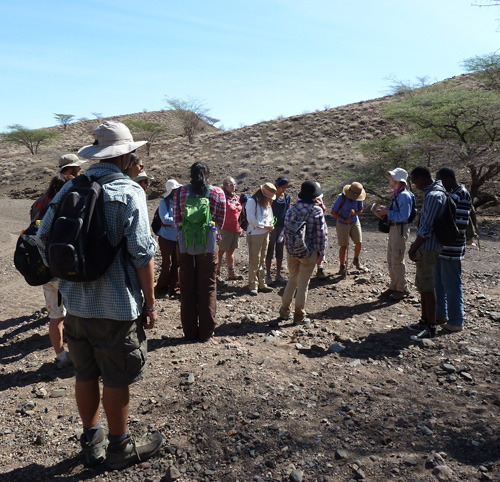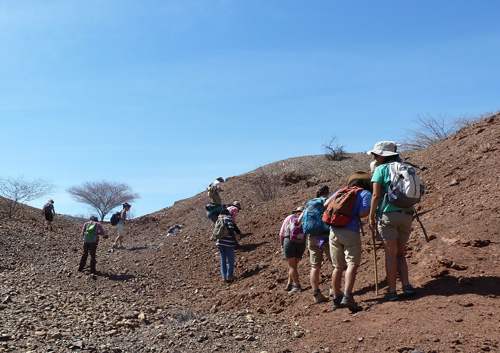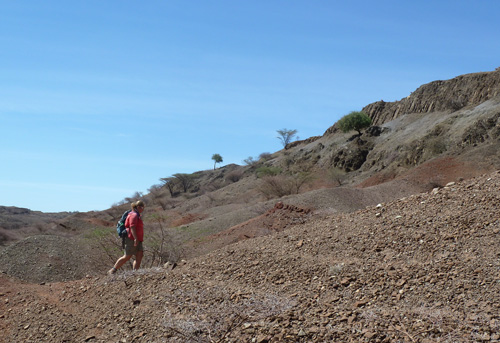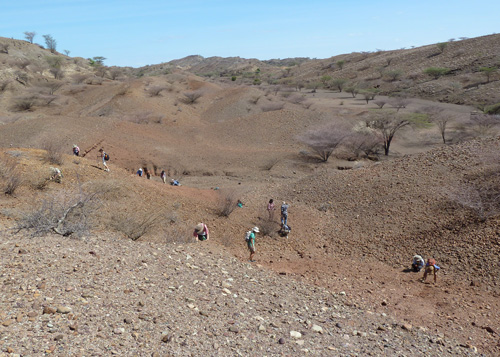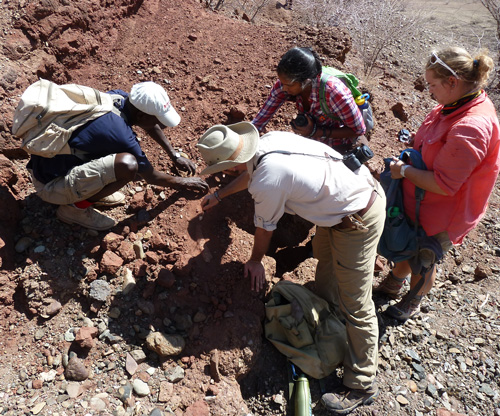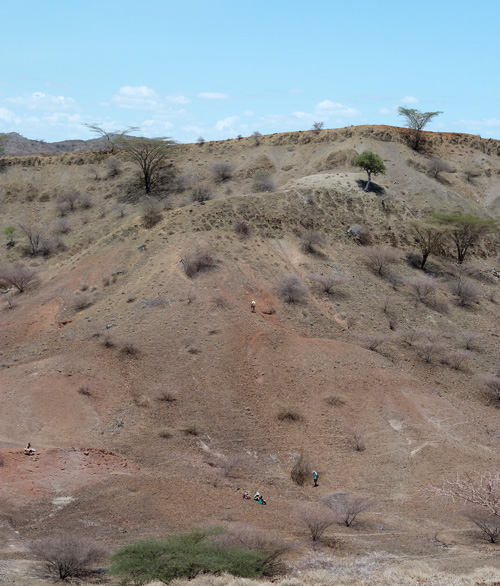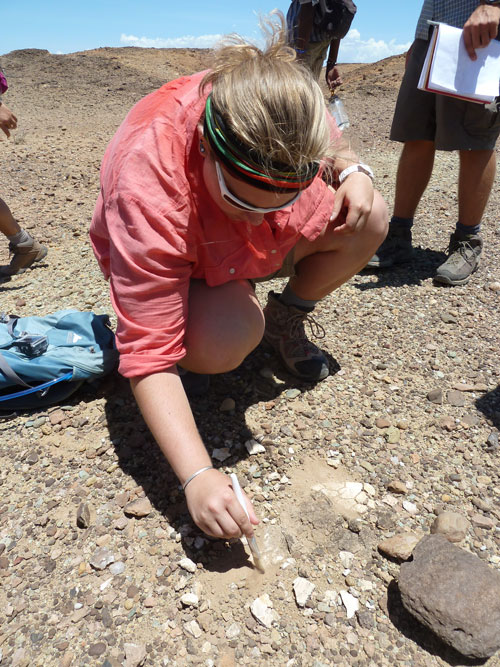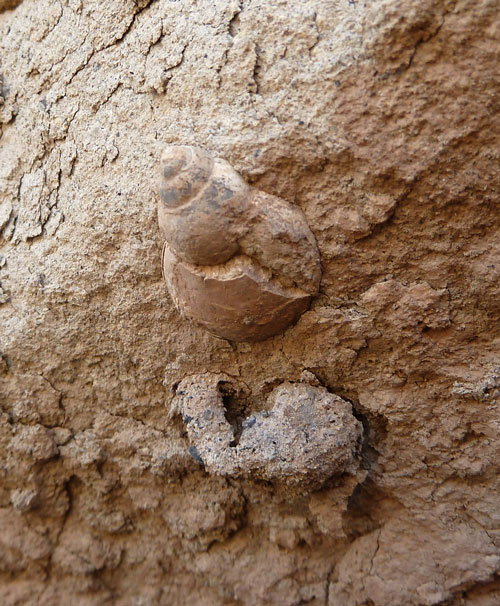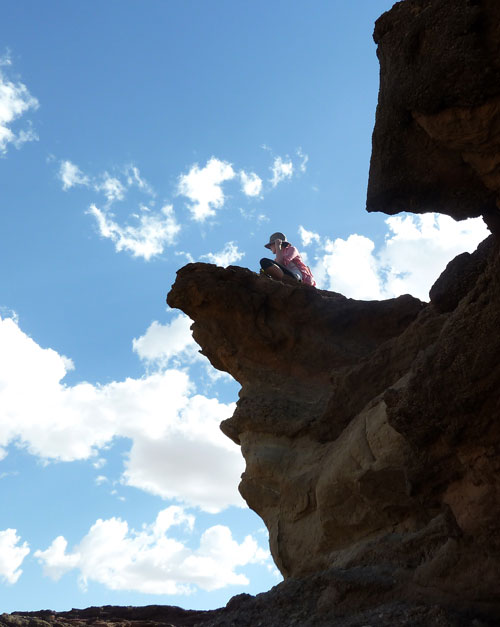Today the Field School students spent the day in the field looking for fossils in three different sites: Lothodok, the edge of the Kalodir deposits and Maurorot. All these sites are north of TBI and represent different slices of time that have been preserved in the fossil record.
I climbed a small hill to get a view of the landscape and fossil hunt. Even though this may seem like a bleak place, it is rich in fossils and has contributed a lot to our understanding of evolution and the early fauna of this part of the world.

